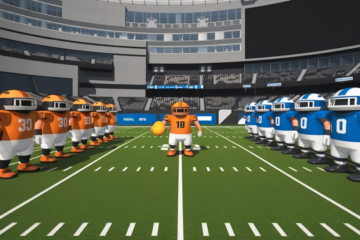The Legacy of Halo (2003) Icons and Banners
The “Halo (2003)” game has been a cornerstone in the realm of gaming, not only because of its revolutionary gameplay but also due to its iconic visual design elements. From the moment players set their eyes on the Halo (2003) game icons and banners, they became deeply ingrained in the gaming culture. These graphical assets were not mere decorative items; they were a reflection of the game’s identity, helping solidify its standing in pop culture.
In this article, we’ll explore the visual journey of Halo (2003) game icons and banners, how they evolved over time, their impact on branding, and why they continue to resonate with gamers today.
The Role of Icons and Banners in Halo (2003)
Icons and banners play a crucial role in any game, especially one as influential as Halo (2003). These visual elements are more than just aesthetic; they represent the game’s core identity, giving players immediate recognition. From the first time players booted up Halo (2003), they were greeted by the familiar blue and green tones of the icons, alongside the bold typography that became synonymous with the game.
Halo’s Distinctive Icons
The Halo (2003) game icons have a simplistic yet powerful design. Whether you were navigating through the game’s interface or looking at the cover art, the consistent use of the Halo logo made an indelible mark. The circle that represents the Halo ring is always present, symbolizing infinity and mystery, much like the game’s plot. Its minimalist design ensured that it was recognizable across different mediums and screen sizes.
Evolution of the Halo Banners
As the game expanded, so did its promotional materials, particularly its banners. Halo (2003) banners were predominantly used in promotional campaigns and in-game events. These banners often featured the Master Chief, the central character, standing against a backdrop of alien landscapes, vast starry skies, or intense battle scenes. They encapsulated the essence of Halo — a story of epic battles, discovery, and human survival in a hostile universe.
The banners became symbolic of the game’s storyline and allowed fans to connect deeply with the game’s atmosphere, even before starting to play. Over time, these visuals became a part of the Halo (2003) experience, and subsequent games in the franchise drew from this foundation.
Impact of Halo (2003) Game Icons and Banners on Gaming Culture
Branding Power of Visual Design
When we think of Halo (2003) game icons and banners, they are more than just graphic elements; they are branding tools. Every time someone saw that distinct Halo icon or a promotional banner, they immediately associated it with quality, innovation, and an engaging storyline. Branding plays a pivotal role in any game’s success, and Halo was no exception. The consistent use of iconic imagery ensured that even non-gamers recognized the Halo (2003) branding.
Cultural Significance
The cultural significance of Halo (2003) game icons and banners cannot be understated. The simplicity of the design paired with the depth of the game’s lore made these visuals symbols of a larger universe. Gamers would proudly display banners or themed icons on their social media profiles or even wear merchandise that featured them. This deep connection between the game and its visual branding is what makes Halo (2003) so memorable.
The Artistic and Technical Aspects of Halo Icons and Banners
Color Schemes and Symbolism
The color schemes used in the Halo (2003) game icons and banners were not randomly chosen. Each shade was selected to evoke specific emotions and to align with the game’s thematic elements. The cool tones of blue and green reflected the vastness of space and the alien worlds, while the silver-gray of the Halo ring gave a sense of ancient technology and mystery. These choices were intentional, designed to lure players into the game’s world before they even picked up the controller.
Typography and Font Design
Another key aspect of the Halo (2003) design language is its typography. The bold, futuristic fonts used in the game’s icons and banners provided a sense of scale and importance. It was immediately clear that Halo was not just another first-person shooter; it was a grand narrative with its own mythos. The typeface was bold, readable, and futuristic, fitting seamlessly with the sci-fi theme of the game.
Why Halo (2003) Game Icons and Banners Continue to Resonate
Even years after its release, Halo (2003) game icons and banners continue to hold a place in the hearts of both gamers and designers alike. These visuals have transcended their initial purpose and have become symbols of nostalgia for the early 2000s gaming era.
Consistency Across the Franchise
One of the reasons why these icons and banners have endured is because of their consistency throughout the Halo franchise. While the designs have been updated and refined over time, the core elements — the Halo ring, the Master Chief, the futuristic typography — have remained intact. This continuity has allowed Halo (2003) to become a timeless brand, and its visual assets serve as a bridge between different generations of gamers.
Collectible and Community Creations
The significance of Halo (2003) game icons and banners has also extended into the fan community. Players frequently create fan art, mods, and even custom banners featuring the iconic visuals from the game. The adaptability and enduring appeal of these designs have allowed fans to continue engaging with the game long after its initial release.
The Importance of Visual Design in Game Marketing
When we look at the success of Halo (2003), it’s clear that visual design played a key role in its marketing. From the early promotional banners to the in-game icons, these visuals helped communicate the game’s tone and genre to potential players. The banners, often featuring intense action scenes or sprawling vistas, appeared across websites, physical stores, and even at gaming conventions. They served as a teaser, hinting at the epic scale of the game’s universe.
FAQs
1. What are the most iconic features of the Halo (2003) game icons?
The Halo (2003) game icons are known for their minimalist design, featuring the Halo ring symbol, futuristic typography, and a color scheme that reflects the sci-fi nature of the game. These elements made the icons instantly recognizable.
2. How did the Halo (2003) banners contribute to the game’s popularity?
The Halo (2003) banners dominated promotional campaigns, showcasing epic battle scenes and the game’s central character, Master Chief. These visuals helped attract players by highlighting the grand scale and immersive world of the game.
3. Why are the Halo (2003) game icons and banners still relevant today?
The consistent use of the core elements from the original Halo (2003) game icons and banners, such as the Halo ring and bold fonts, has kept them relevant across the franchise. Their timeless design continues to resonate with both old and new fans.
4. Can I create custom Halo (2003) banners for personal use?
Yes, many fans create custom Halo (2003) banners as part of fan art or for personal use. These creations often pay homage to the original game while adding unique touches from the fan community.
5. How were the Halo (2003) game icons used within the game?
The Halo (2003) game icon’s appeared in various interfaces within the game, such as menus and navigation tools, giving players a visually cohesive and intuitive experience.
Conclusion
The Halo (2003) game icons and banners represent a significant chapter in gaming history. Through their striking design and consistent branding, they became symbols of the game’s success and cultural impact. Even years after the game’s initial release, these visual elements remain etched in the memories of gamers, continuing to inspire and influence the gaming world.



0 Comments